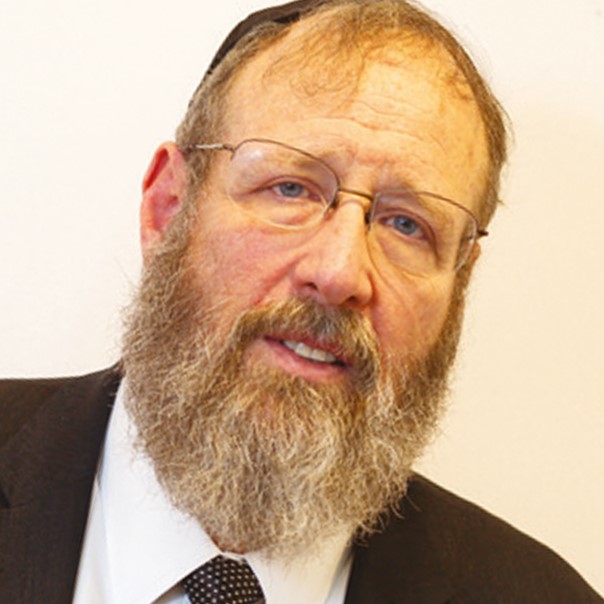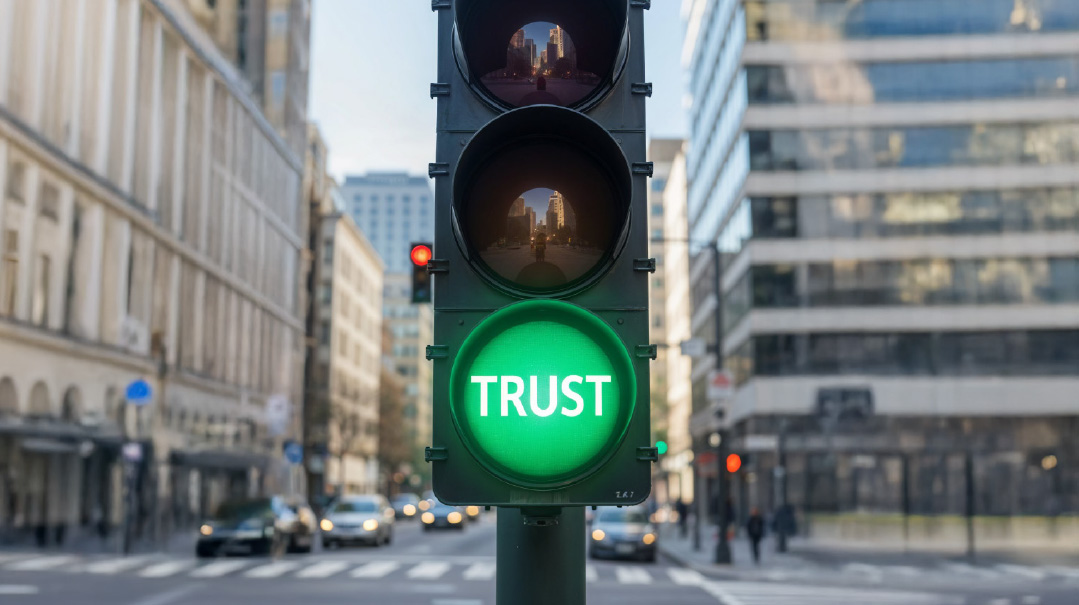Endless?

The memory of that first Pesach reminds us that no matter how hopeless the galus seems, it is inalterably finite

G
alus is a term that connotes so much suffering — homelessness, disunity, persecution, destruction, and much more. These components of galus cause us pain, but they are not the worst of the experience. There is another factor that causes us the deepest hopelessness and despair, and that is the endlessness of our exile.
Seeing a “light at the end of the tunnel” can carry us through even the most grueling situation. A person who knows that getting his life on track will require some extraordinary effort, but that the effort will pay off, is usually willing to endure the suffering. People are willing to work day and night to establish a business, earn a degree, or raise a family. Someone who is ill is willing to endure treatments and surgery that are painful but potentially effective. The prospect of better days ahead keeps him going. However, if he feels that his life will be endless drudgery, with no end to the toil, he will despair and refuse to move forward.
It has been just about a half a year since our world was shaken by the terrible events that occurred on Simchas Torah. The first emotion was shock, followed by fright, then anger. Israel began to fight furiously and heroically, with an unmatched intensity and bravery. We bombed tunnel after tunnel, killed commander after commander, and wrecked installation after installation. Day after day, week after week. It is now six months later, and there is no sign of reaching any end. Every tunnel leads to another tunnel, every lair to another lair, and there seems to be an endless number of Hamas fighters.
But that is only one aspect of the endlessness. Even if we succeed in killing every single Hamas fighter tomorrow, there will be another generation of Hamas fighters under this name or that name. And when we finish in Gaza, Lebanon has an endless supply of Hezbollah soldiers. And Yemen has Houthis. And so on and so on. Can we even be sure about the countries that signed peace treaties with us?
Does anyone seriously think that someday, the Palestinians will make a rational calculation and say to themselves, “Why not just use the billions of dollars the world has given us to build ourselves a beautiful country, with jobs for everyone?” There may be temporary periods of reprieve, when exhaustion and calm minds prevail, but very soon the terrorism will start again.
It was not supposed to be that way. For almost 200 years, the common wisdom was that all our woes were a byproduct of our homeless existence. No natives like foreigners living in their homeland. But usually after a generation or two, the foreigners integrate into the host culture.
We, however, persisted in retaining our own identity. We were the outsiders. We had no armed forces, and therefore could not defend ourselves. We were not allowed to engage in farming and many other trades; therefore, we became businessmen, so-called parasites who “lived off other people’s hard work.” Our religion was different from that of our hosts, spawning a plethora of horrendous libels.
The solution was thought to be obvious, if difficult. Become a normal people. Have a country that is yours and everything will fall into place. Sure, there will be birth pangs, but those are productive pains, like that of a dislocated shoulder being pulled into place. Once that initial stage has passed, life should be natural and smooth.
Seventy-six years ago, it happened. Sure, it required tremendously hard work, and blood, and bravery; but it happened indeed. The War of Independence was to be expected; the skirmishes and killing of the fedayeen was to be expected; even the 1956 Sinai campaign could be seen as part of that process. In 1967, we won a victory so magnificent that we believed there would not be a war for the next 100 years. However, no sooner had the Arabs been defeated than they began preparing for the Yom Kippur War, which brought us a hair’s breadth away from total disaster, chas v’shalom.
Again, we managed to regroup and surge back incredibly. But no matter how many times we win, they keep coming back, again and again. Can anyone explain how, almost a century later, with magnificent armed forces, sophisticated and brave beyond words, we are still not safer than we were at the beginning of our venture? That no fewer Jews are killed in the ongoing skirmishes than in the pogroms of Europe?
We have built a society that is widely considered successful by Western standards. It offers education, economic opportunity, health care, democratic institutions, and so forth. And yet we are still seen as pariahs. We are bloodsuckers, world manipulators, and just plain genocidal. We have not gained an iota more respect from our vilifiers. Yes, there are good and honest people who see things truthfully, but theirs does not seem to be the majority view.
We are not weighed down by the suffering itself. We have emerged from these situations and worse, time and time again. Rather, we are experiencing an accumulated sense of hopelessness. If this hasn’t worked, what will? Nothing seems able to bring an end to it. And “endlessness” is synonymous with hopelessness and despair, chas v’shalom.
But we have been here before.
The Ramban, in a most powerful observation (parshas Vayechi, Bereishis 47:28), compares our galus — the last of all galuyos — to Yaakov’s descent into Egypt, the first of the galuyos. The most important of these similarities is that the redemption does not arrive as expected. Yaakov had expected to spend the famine years in Mitzrayim and then return to Eretz Yisrael. But alas, the galus stretched on and on, and Yaakov never made it back; only his bones came home.
“So too,” writes the Ramban, “our galus has gone on interminably. We have no notion of when it will end. We are as if dead, feeling as if our bones are dried out and lifeless.”
Our galus is the galus of Edom, and Edom is compared to an abyss (Bereishis Rabbah 2:4, based on the girsa of Yalkut Shimoni and others). What defines an abyss, more than anything else, is that it seems bottomless.
Eisav’s bottomless, “endless” abyss is really the ultimate contradiction to Hashem. Hashem is defined as Infinite, and therefore, the good in creation must also be infinite. This means that the default setting of creation is goodness. Any darkness or difficulty is inevitably temporary, created to fulfill a very specific necessity. As soon as that need is satisfied, the world returns to light and tranquility.
Eisav, on the other hand, is the evil counterbalance to this truth. He casts the mirage of an “abyss” onto creation. The default setting of the world therefore seems to be meaningless and endless darkness, with maybe an occasional point of light.
As long as we are taken in by this illusion, we sink into despair, and we lose our desire to continue.
But we were here once before.
In Mitzrayim, we were not even a people yet. We had a vague memory of some Divine promise. We had sunk into two centuries of grueling labor and persecution, with not a hint of any change. And one day, in an instant, we became alive. The redemption was “b’chipazon,” hurriedly, instantly. Had darkness indeed been the default setting, then change would have required a process. But since it was the other way around, and living and thriving is the default setting, with darkness but a temporary necessity, we returned to our default position instantly.
This is our great challenge today. Two millennia of galus. A glimmer of hope. And still, we find ourselves endlessly sloshing in the quicksand of death. It is so easy to think that darkness is the norm, that evil is an infinite abyss.
But the memory of that first Pesach reminds us that no matter how hopeless the galus seems, it is inalterably finite. For if Hashem is Infinity, then goodness must be the true default setting for creation.
The redemption is called the “keitz,” the end, or the boundary. The angel (see Daniel 12) revealed to Daniel that there is a keitz, but hid the calculation within a code for which we lack the key. What was the point of revealing the keitz without giving us a way to calculate it? What, in fact, was revealed?
The answer is that the angel revealed the very concept of a keitz, and that is the essential nechamah. This assures us that evil exists only within certain boundaries and has a clearly defined end. To us mortals, with our limited span of existence, galus seems endless; but that is an illusion.
In truth, the world is a world of goodness, and the difficulties are, in their essence, temporary. They must end. The belief in Mashiach and in a keitz is therefore not simply that we will be helped and saved from our woes. It is an entirely different perspective on the universe created by the Infinite One, Who is all good.
The Ramban concludes with these moving words:
“We are like the dead, thinking that our bones are dried out. We will then be brought up from all the nations, as the offering to Hashem. The nations will be aggrieved when they recognize the honor bestowed upon us. We will see the vengeance of Hashem.
“He will pull us up, and we will live before Him.”
Rav Aaron Lopiansky is the rosh yeshivah of the Yeshiva of Greater Washington, Tiferes Gedaliah, and a talmid of Rav Chaim Shmuelevitz, Rav Nachum Partzovitz, and his father-in-law, Rav Beinish Finkel. He also learned under Rav Moshe Shapira. Rav Lopiansky has authored several seforim, including the recently released Orchos Chaim, Ben Torah for Life.
(Originally featured in Mishpacha, Issue 1008)
Oops! We could not locate your form.







